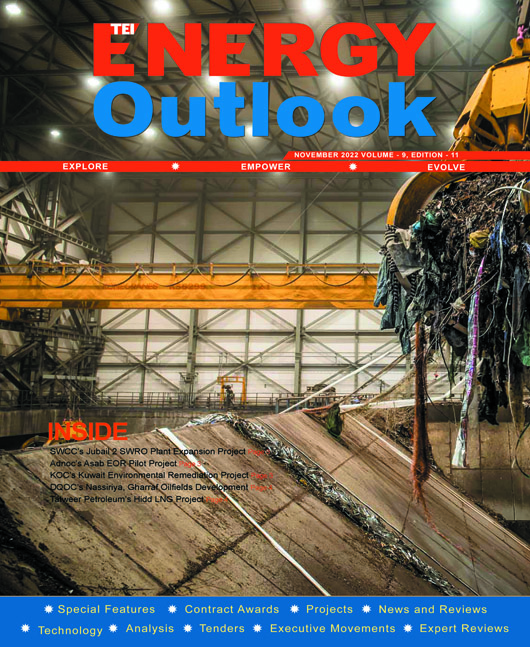
WTE Schemes Take Off in the Gulf
In the past few decades, the gulf region has seen emergence of diverse clean energy alternatives for power generation including energy-from-waste, which is sustainable, indigenous, and befitting environment and society as well. The governments across the region are seeking to invest in waste-to-energy (WTE) projects to meet sustainability targets and reduce landfill waste and carbon emissions.
According to the World Bank report, two billion tonnes of waste is produced every year with at least 33% of it not managed in an environmentally safe manner. WTE could minimize landfill sites, which are a serious health hazard.
A WTE facility has the potential of generating about 500-700 kilowatt hours of electricity from per tonne of processed waste.
The UAE is leading the regional push for WTE capacity development. With a goal to become carbon neutral by 2050, WTE schemes have emerged as an important pillar of the UAE's sustainability strategy.
Some of the major WTE projects in the UAE include plant in Sharjah, which will divert over 300,000 tonnes of non-recyclable waste from landfills every year, and generate 30 MW of clean energy, while powering up to 28,000 homes.
In Dubai, the municipality is developing a $1.1bn WTE plant in Warsan, a former landfill site. The facility will process 1.9 million tonnes of municipal waste per year and produce approximately 200 MW of renewable electricity, making it one of the largest in the world.
As part of the RAK Energy Efficiency and Renewables Strategy 2040, Ras Al-Khaimah focuses on being able to meet at least 2% of the primary energy demand of the emirate from waste by 2040.
Abu Dhabi is also planning to develop significant WTE capacity. The planned WTE plant will be located near the existing Al-Dhafra landfill site in Abu Dhabi, and will have an expected processing capacity between 600,000 and 900,000 tonnes of waste per year.
Saudi Arabia aims to achieve 94% landfill diversion for the whole country by 2035. The kingdom produces 50 million tonnes of waste every year, most of which currently ends up in landfills.
Under the auspices of the Vision 2030 energy diversification plan, Saudi is poised to achieve 3 GW target by 2030. Sadara Chemical Company is building a sustainable industrial WTE facility in PlasChem Industrial Park.
Oman Environmental Services Holding Company (be’ah) is developing the country’s first WTE facility with an estimated capacity of 50 MW. Throughout the Middle East, sustainable energy generation plans through WTE is visibly growing.
High level of waste generation and a raft of environmental and health issues is a critical factor which is pushing the region to work towards turning waste into power.
Editor